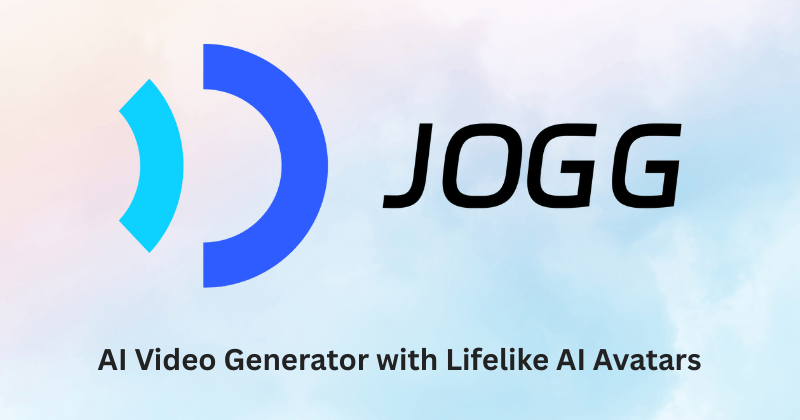To write your first blog post using AI, start by selecting an appropriate AI writing tool that meets your needs for content creation. Next, conduct topic and keyword research to identify trends and align with user intent. Use AI assistance to outline your blog post, ensuring a clear structure. Generate engaging headlines and then edit the AI-generated content for clarity and tone. Finally, optimize for SEO and publish, while monitoring performance for future improvements. More insights await.
Understanding the Basics of AI Writing Tools

Artificial Intelligence (AI) writing tools have emerged as powerful allies for content creators, streamlining the writing process and enhancing productivity. These software applications leverage artificial intelligence to generate, assist, or improve written content. By utilizing natural language processing (NLP) and machine learning (ML), they produce human-like text based on user prompts. Their core functions include content generation, grammar correction, style improvement, and plagiarism detection. AI writing tools are versatile, supporting tasks from creative writing to academic essays. Additionally, many AI writing tools offer SEO capabilities that enhance the potential reach and visibility of written content. They operate using large language models trained on extensive datasets, allowing them to understand context and generate relevant responses. As a result, tools like ChatGPT Plus provide users with advanced capabilities for a variety of writing needs. While they offer remarkable efficiency, human oversight remains essential to guarantee factual accuracy and alignment with the intended tone. This is crucial as machine learning AI tools learn from data without explicit programming, making them more flexible and capable of generating creative text.
Choosing the Right AI Writing Platform
Selecting the right AI writing platform can greatly impact the quality and efficiency of content creation. Various platforms offer distinct features, such as templates for different content types, brand customization options, and built-in tools like plagiarism checkers. Some platforms, like Jasper, utilize advanced language models for coherent copy, while others, like Rytr, excel at short-form content. Pricing models range widely, with many offering free trials to explore their capabilities. User-friendly interfaces and real-time editing features facilitate a smooth writing process. Additionally, integrations with tools like Grammarly and SurferSEO can optimize workflows. Ultimately, choosing the right platform depends on specific needs, such as content type, team collaboration, and budget considerations. Moreover, leveraging AI tools can enhance your overall writing experience and help you produce high-quality content efficiently. Furthermore, developing AI-prompting skills is essential for maximizing the potential of these platforms. Writesonic, for instance, includes real-time editing features that facilitate teamwork and efficient content refinement.
Conducting Topic and Keyword Research

Conducting thorough topic and keyword research is essential for crafting a successful blog post that resonates with the target audience. This process involves identifying trending topics and evaluating keyword difficulty to guarantee the chosen subject has both interest and ranking potential. Key strategies include:
- Utilizing tools like Semrush for trending topics and keyword difficulty scores.
- Analyzing user intent to align keywords with audience needs effectively.
- Focusing on long-tail keywords to target specific interests and improve ranking chances. Additionally, research helps to attract the right audience by focusing on niche topics that align with current trends. Effective keyword research can significantly enhance the discoverability of your content through search engines, especially when you leverage AI tools that streamline workflows and optimize content strategies.
Outlining Your Blog Post With AI Assistance
Outlining a blog post can become a streamlined process when utilizing AI assistance, as it transforms the way writers approach content creation. AI outline generators quickly analyze topics and produce structured outlines within minutes. By entering a main topic, writers can receive a detailed framework that typically includes an introduction, several main sections, and a conclusion. This organized approach helps eliminate writer’s block, providing a clear roadmap for content flow. Customization options for tone and section length guarantee the outline aligns with specific goals. Additionally, incorporating key points and focus keywords can enhance SEO and relevance. Overall, AI-assisted outlining not only saves time but also guarantees extensive topic coverage and logical organization. Moreover, tools like Content Editor ensure that the generated outlines adhere to best practices for smarter writing, further enhancing the quality of the final piece. Furthermore, using an AI-powered tool can improve SEO performance, contributing to higher visibility and engagement of blog content. This approach allows writers to harness AI technology effectively, ensuring that their posts are not only well-structured but also resonate with their target audience.
Generating Engaging Headlines

Generating engaging headlines is essential for capturing reader attention and driving traffic to blog posts. Effective headlines not only attract readers but also improve SEO performance. AI tools can enhance this process by suggesting optimal headline structures and keywords.
Key considerations for generating engaging headlines include:
- Aim for 6-13 words, with 7-9 words being perfect for clarity and curiosity.
- Incorporate emotional triggers to boost engagement and encourage sharing.
- Utilize A/B testing to refine headlines based on performance metrics. Additionally, remember that blogs increase chances of ranking higher in search by 434%, which highlights the importance of effective headlines for SEO. This is particularly relevant as 44% of tech marketers say blogs produce the best results compared to other channels, emphasizing the need for compelling headlines to maximize impact. Using AI tools for headline generation can significantly streamline the creative process and increase the effectiveness of your blog posts.
Drafting Your First Blog Post
Drafting the first blog post can feel like a formidable task for many writers, but a well-structured approach can simplify the process.
Creating an outline is essential, featuring a clear title, an engaging introduction, an organized body with subheadings, and a concise conclusion. This logical flow enhances clarity and guides readers step-by-step through the topic.
Each section should focus on a specific aspect to avoid overwhelming the audience. Utilizing bullet points and subheadings improves skimmability, while a strong conclusion summarizes key points and encourages reader engagement.
Additionally, incorporating a focus keyword throughout the post aids in search engine optimization, ensuring the content is discoverable and relevant to the intended audience.
Editing and Customizing AI-Generated Content

Editing and customizing AI-generated content is an essential step in the blogging process that can greatly enhance the quality and effectiveness of a post.
To achieve clarity and engagement, it is important to focus on several key areas:
- Simplify complex sentences, ensuring they are digestible for readers.
- Verify facts and statistics against credible sources to maintain accuracy.
- Adjust the content to reflect the brand’s voice, ensuring consistency in tone.
Optimizing for SEO and Readability
Optimizing for SEO and readability is an essential step in creating a successful blog post that resonates with both search engines and readers. Conducting intent-based keyword research guarantees alignment with user search behavior.
Early incorporation of focus keywords in titles, headers, and meta descriptions strengthens SEO targeting. Utilizing semantic SEO, including related phrases, enhances content relevance.
Short, keyword-rich URLs and optimized header tags improve ranking potential. Formatting content with brief paragraphs, bullet lists, and clear headings enhances reader engagement.
Additionally, maintaining mobile-friendliness and fast loading times is critical for user experience. Regular updates with accurate, well-sourced information build authority, while engaging meta descriptions can greatly increase clickthrough rates.
Each of these strategies contributes to a more effective blog post.
Publishing Your Blog Post

After optimizing for SEO and readability, the next step in the blogging process involves the actual publishing of the blog post.
Selecting the right blogging platform is essential, as it affects customization, workflow, and audience reach. Popular choices include WordPress, Wix, and Medium, each with unique features.
Before hitting “publish,” verify the content meets quality standards:
- Format all images properly and add descriptive alt text.
- Organize headings hierarchically for clarity.
- Include internal and external links to enhance credibility.
Lastly, schedule the post for maximum visibility, considering audience time zones and peak traffic.
This careful preparation verifies that the blog post is not only published effectively but also reaches the intended audience successfully.
Monitoring Performance and Making Improvements
How can bloggers effectively monitor the performance of their posts and make necessary improvements?
To start, tracking key performance metrics is essential. Bloggers should measure traffic volume, page views, and bounce rates to assess visibility and relevance. Additionally, analyzing average session duration and conversion rates provides insights into content engagement and effectiveness.
Tools like Google Analytics and SEO platforms help monitor these metrics, while readability scores gauge clarity. Continuous monitoring enables bloggers to identify underperforming content through scheduled audits and user feedback.
Making data-driven improvements, such as enhancing readability or optimizing keywords, can considerably boost performance. Ultimately, iterative adjustments based on detailed analytics will refine content strategy and align with audience expectations, fostering ongoing growth and engagement.
Frequently Asked Questions
Can I Use AI for Writing Fiction or Creative Stories?
Yes, AI can be utilized for writing fiction and creative stories. It offers tools for generating plots, character profiles, and narrative structures, enhancing creativity while allowing human authors to refine and personalize the final output.
How Does AI Handle Plagiarism Detection and Originality?
AI handles plagiarism detection by comparing text against extensive databases, employing advanced algorithms to identify similarities and originality. It offers instant feedback, uniqueness scores, and multilingual support, though limitations exist regarding accuracy and privacy concerns.
Are There Any Limitations to Ai-Generated Content?
AI-generated content faces limitations, including lack of originality, risk of repetitive output, data quality challenges, and ethical concerns. These factors may hinder engagement, brand differentiation, and trust, ultimately affecting the overall effectiveness of the content produced.
How Often Should I Refresh My Blog Posts With AI?
The frequency of blog post refreshes is influenced by content type, audience engagement, and industry trends. AI tools assess these factors to recommend ideal refresh schedules, ensuring posts remain relevant and maintain audience interest.
Can AI Writing Tools Support Multiple Languages?
AI writing tools can indeed support multiple languages, offering capabilities for content generation, editing, and rephrasing across various linguistic contexts, enhancing global outreach while maintaining contextual accuracy and engaging diverse audiences effectively.







